What Comes After 3 4 on a Ruler
What is a Ruler
A ruler is a device with measurement markings on it used for measuring drawing straight lines. Students, engineers, contractors, and makers use rulers for math, construction, architecture, sewing, landscaping, and more.
According to Dictionary.com, a ruler is a strip of wood, metal, or other material having a straight edge and usually marked off in inches or centimeters, used for drawing lines, measuring, etc.[1]
Several types of rulers include wooden or metal rulers, yardsticks, seamstress tapes, tape measures, carpenters rules, and architects scales.
Rulers have measurements in imperial and metric, imperial-only, or metric-only. Get more information on rulers, including different types and uses, or download and print one of our free printable rulers.
How to Use a Ruler – Standard Imperial Measurements
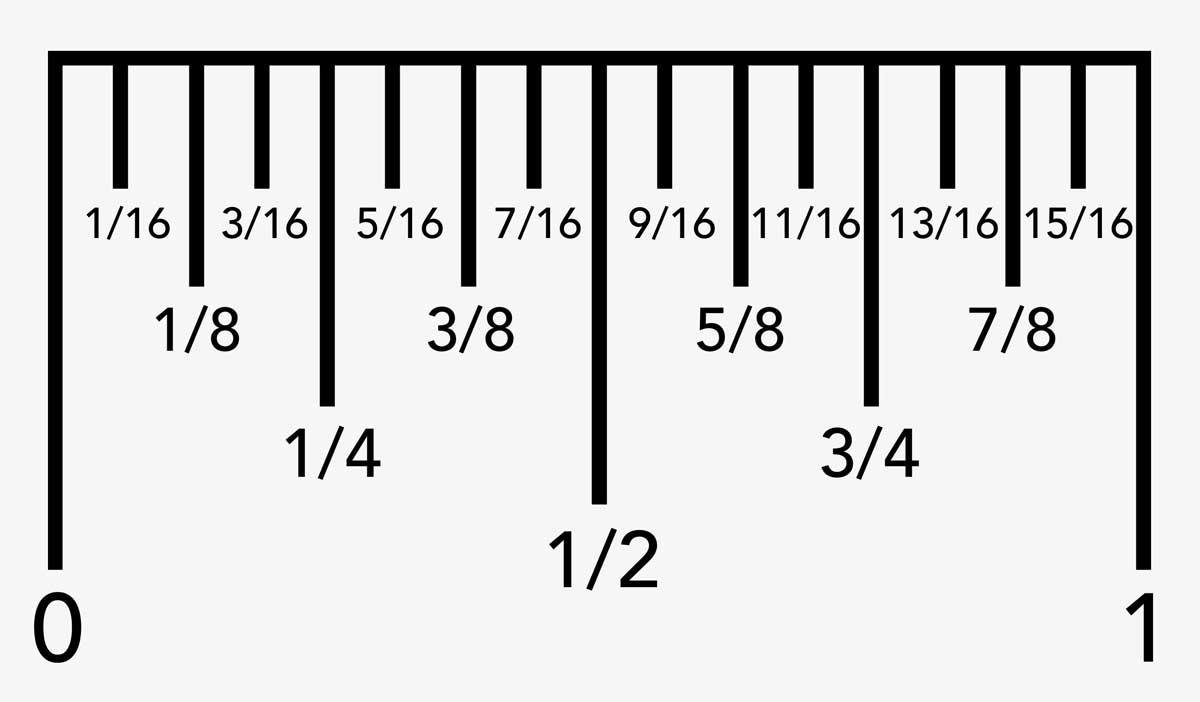
The markings on a standard ruler represent the fractions of an inch. The markings on a ruler from the start to the 1″ mark are: 1⁄16", 1⁄8", 3⁄16", 1⁄4", 5⁄16", 3⁄8", 7⁄16", 1⁄2", 9⁄16", 5⁄8", 11⁄16", 3⁄4", 13⁄16", 7⁄8", 15⁄16", and 1". If the measurement is over 1″, simply use the number on the ruler and add the fraction. For instance, if you're two ticks past the number 3 tick, then the measurement is 3 1⁄8".
What Do the Markings on a Ruler Mean
Reading a ruler starts with understanding what all the ticks mean. The largest ticks on a ruler represent a full inch, and the distance between each large tick is 1″.

The large ticks in between the inch markings are half-inch markings, and the distance between an inch tick and a half-inch tick is 1⁄2".

The mid-sized ticks between the inch ticks and half-inch ticks are the quarter-inch ticks. The distance between a quarter-inch tick and an inch tick or a half-inch tick is 1⁄4".
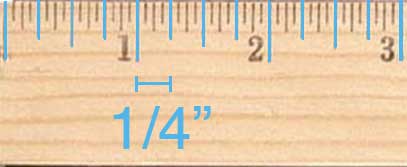
The smaller ticks are the eighth-inch ticks and may be the smallest or second smallest markings on the ruler. The distance between an eighth-inch tick and the other larger ticks is 1⁄8".
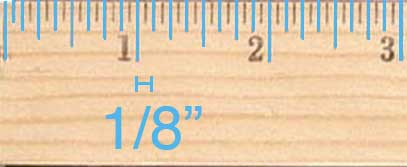
The smallest ticks on a ruler are the sixteenth-inch ticks. The distance between a sixteenth-inch tick and the other larger ticks is 1⁄16".

How to Use a Metric Ruler – Metric Measurements
Metric rulers have centimeter and millimeter markings. The larger markings these represent a centimeter.
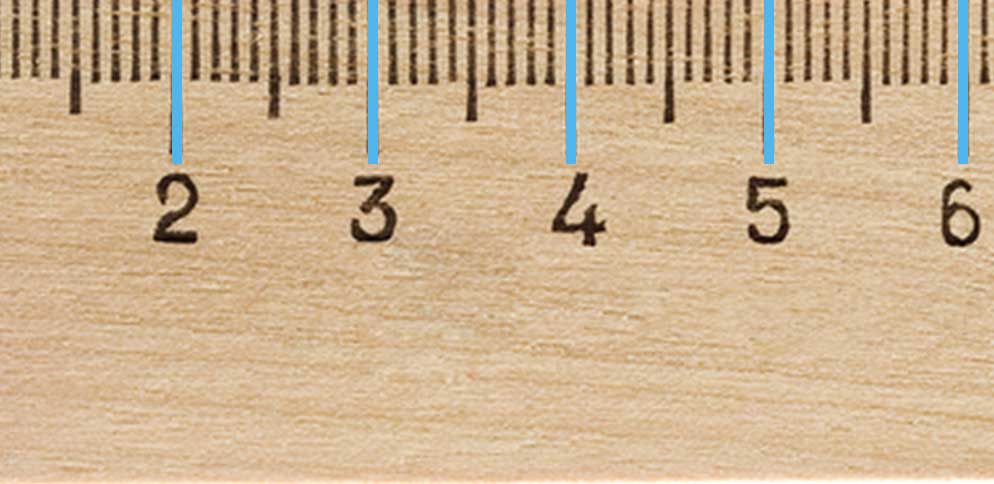
The smaller ticks on a metric ruler represent a millimeter. There are 10 millimeters in a centimeter, so there are 9 millimeter ticks between each centimeter tick.
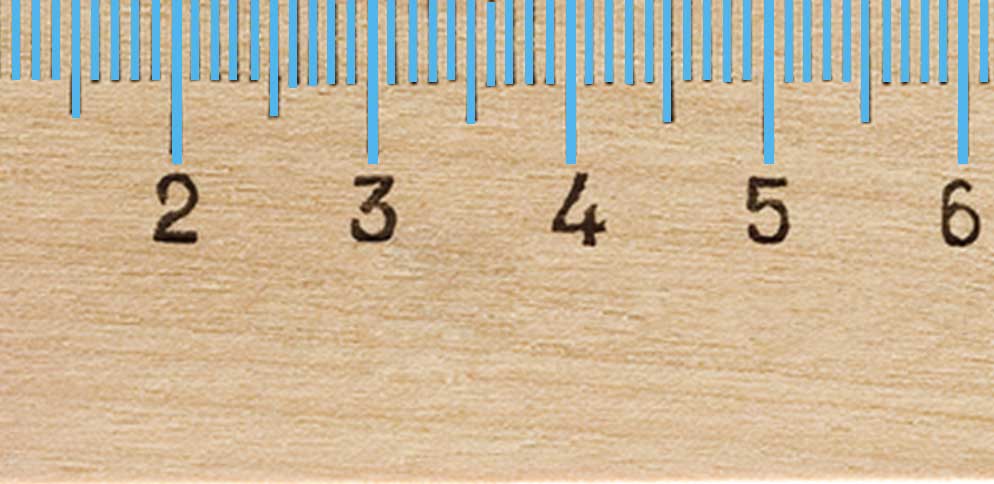
Watch for More Information on Reading a Ruler
Ruler Measurements: Inch Fractions on a Ruler
These are the measurements and fractions that are on a ruler and the decimal and millimeter metric equivalents. If you need to convert larger inch fractions to decimal or metric, use our inch fraction calculator.
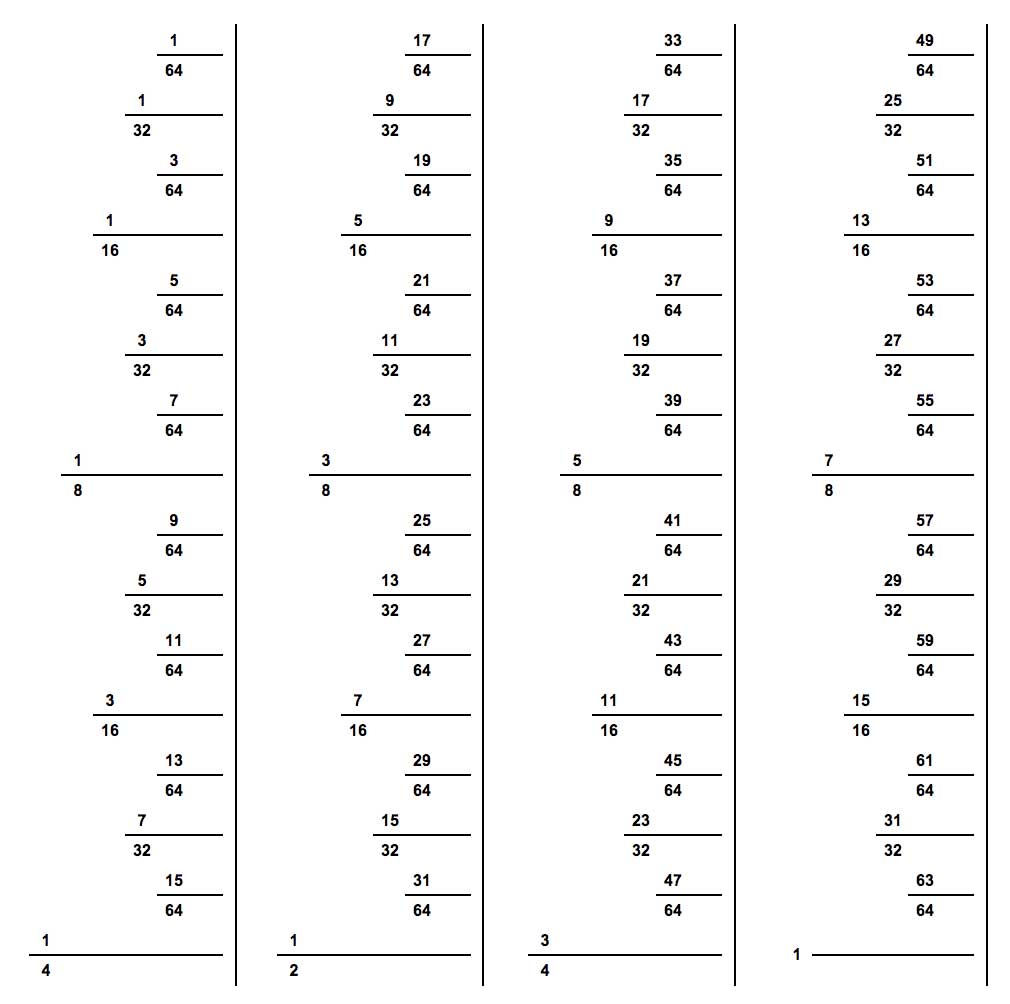
Fraction, Decimal, and Millimeter Equivalent Measurements
| Fraction | Decimal | Millimeters |
|---|---|---|
| 1⁄16" | 0.0625 | 1.5875 |
| 1⁄8" | 0.125 | 3.175 |
| 3⁄16" | 0.1875 | 4.7625 |
| 1⁄4" | 0.25 | 6.35 |
| 5⁄16" | 0.3125 | 7.9375 |
| 3⁄8" | 0.375 | 9.525 |
| 7⁄16" | 0.4375 | 11.1125 |
| 1⁄2" | 0.5 | 12.7 |
| 9⁄16" | 0.5625 | 14.2875 |
| 5⁄8" | 0.625 | 15.875 |
| 11⁄16" | 0.6875 | 17.4625 |
| 3⁄4" | 0.75 | 19.05 |
| 13⁄16" | 0.8125 | 20.6375 |
| 7⁄8" | 0.875 | 22.225 |
| 15⁄16" | 0.9375 | 23.8125 |
| 1″ | 1 | 25.4 |
What Comes After 3 4 on a Ruler
Source: https://www.inchcalculator.com/how-to-read-a-ruler/
0 Response to "What Comes After 3 4 on a Ruler"
Post a Comment